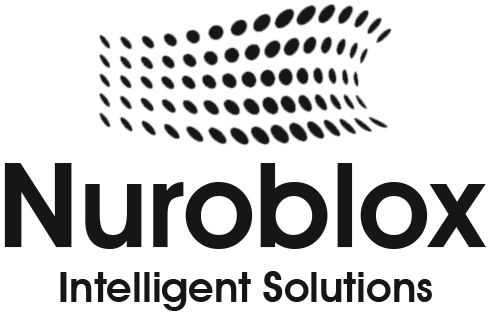Data Privacy in AI Automation: What Every Business Must Know
AI automation is transforming how businesses operate boosting speed, accuracy, and scalability across departments. But with great automation comes great responsibility. As organizations automate workflows that involve customer data, financial records, or personal identifiers, protecting that data becomes critical.
Data privacy isn’t just a compliance checkbox; it’s a foundational pillar of trust, especially in AI systems that process and learn from large, sensitive datasets. Whether you’re automating insurance claims, HR onboarding, or customer support, ensuring privacy at every step is vital to avoid breaches, fines, and brand damage.
In this blog, we’ll break down the key privacy risks in AI automation, explore regulatory expectations, and show how businesses can build secure, privacy-first automation strategies that scale responsibly.
Why Data Privacy Matters in AI Automation
AI automation thrives on data, but not just any data. It often processes sensitive personal, financial, or operational information, such as customer identities, medical records, transaction histories, or internal business insights. As automation becomes more deeply embedded in enterprise workflows, the risk surface for data exposure expands significantly.
Key Reasons Privacy Must Be a Priority:
Compliance with Global Regulations: Laws like GDPR, CCPA, HIPAA, and India’s DPDP Act mandate strict controls over how personal data is collected, processed, stored, and deleted. AI systems must comply with these regulations or face steep fines and legal consequences.
Protecting Customer Trust: Customers want speed and convenience, but not at the cost of their data privacy. When users know their information is safe, they’re more likely to engage, transact, and remain loyal.
Preventing Security Breaches: AI automation systems are often interconnected with ERPs, CRMs, and cloud platforms. If privacy is overlooked, these integrations can create security weak spots, making your business vulnerable to data leaks or cyberattacks.
Enabling Ethical AI: Data privacy is foundational to responsible and ethical AI. Ensuring transparency, fairness, and security in your AI workflows strengthens not just compliance but corporate reputation.
AI automation delivers speed and scale, but without privacy built into its core, it can lead to costly breaches, lost trust, and legal risk. That’s why privacy-first AI automation isn’t just smart, it’s essential.
Common Data Privacy Risks in AI Automation

While AI automation offers speed, efficiency, and scale, it also introduces new vectors for data privacy vulnerabilities. Without proper controls in place, businesses may unknowingly expose sensitive information, violate regulations, or compromise user trust.
Here are the most common privacy risks in AI-powered automation systems:
1. Unintentional Data Exposure- AI systems often ingest large datasets, sometimes without full oversight into what they contain. If personally identifiable information (PII) or confidential business data isn’t properly masked or encrypted, it can be exposed during processing, sharing, or storage.
Example: An AI model trained on unfiltered customer support logs may leak phone numbers, emails, or account numbers.
2. Inadequate Access Controls- Automated workflows often span departments and systems. Without strict role-based access and audit trails, sensitive data can be accessed or manipulated by unauthorized personnel or systems.
Fix: Implement granular permissions and track all data access activities in audit logs.
3. Bias or Leakage from AI Training Data- If AI models are trained on biased, outdated, or sensitive datasets without anonymization, they can learn and reproduce harmful patterns or worse, “memorize” and inadvertently reveal private data during predictions.
Risk: A chatbot trained on uncensored internal emails could output private conversations.
4. Lack of Transparency in Data Usage- Users and customers may not know how their data is being used in AI automation. This lack of visibility can result in non-compliance with GDPR or CCPA, where data subjects have rights to consent, access, or delete their data.
Solution: Publish clear data handling policies and provide opt-in/opt-out mechanisms.
5. Weak API and Integration Security- AI systems often connect to third-party tools and APIs (e.g., CRMs, ERPs, cloud databases). If these endpoints aren’t secured, encrypted, or monitored, they become easy targets for data interception or breaches.
Recommendation: Use secure APIs, encrypt all data in transit, and implement regular penetration testing.
6. Shadow AI and Automation Sprawl- With low-code/no-code platforms, employees can deploy AI tools or automation without IT or compliance oversight. This “shadow AI” creates blind spots that may violate privacy policies or expose sensitive workflows.
Mitigation: Maintain centralized governance over AI/automation initiatives.
AI automation has the power to transform operations, but it must be designed with data privacy at its core. By identifying these risks early and embedding safeguards into every stage of your AI pipeline, your business can remain compliant, trustworthy, and future-ready.
Privacy-First Design Principles for AI Automation
Incorporating privacy from the ground up isn’t just a best practice; it’s essential in the age of AI automation. As systems become more autonomous and data-driven, adopting Privacy-First Design ensures that AI solutions are secure, compliant, and ethically sound from day one.
Below are key principles to embed privacy into your AI automation stack:
1. Data Minimization
Only collect and process the data that is strictly necessary for the task at hand.
- Avoid storing excessive or irrelevant personal information
- Use sampling, tokenization, or aggregation to reduce exposure
- Regularly audit and clean up datasets to eliminate redundant data
Why it matters: Less data means less risk and easier compliance.
2. Anonymization & Pseudonymization
Before feeding data into AI models, remove or mask personally identifiable information (PII).
- Use irreversible anonymization where possible
- Apply pseudonymization to retain utility while protecting identity
- Ensure masked data cannot be easily re-identified
Helps meet GDPR and CCPA standards for safe data processing.
3. End-to-End Encryption
Protect sensitive data in transit and at rest using strong encryption protocols.
- Encrypt data across APIs, storage layers, and during AI model inference
- Use secure key management systems
- Ensure third-party tools and platforms comply with your encryption standards
Encryption ensures that data remains protected, even if breached.
4. Role-Based Access Control (RBAC)
Not every system or employee should have access to all data.
- Implement fine-grained access control based on roles and responsibilities
- Use multi-factor authentication (MFA) for administrative access
- Monitor access logs regularly for anomalies
Reduces internal data exposure and enforces data governance.
5. Transparent Data Usage
Clearly communicate how data is being collected, used, and stored.
- Include privacy notices in your apps and platforms
- Provide users with control over their data (e.g., opt-out, access, delete)
- Document your AI data pipeline for internal audits
Builds user trust and ensures legal compliance.
6. Human-in-the-Loop (HITL) Oversight
For sensitive or high-impact decisions (e.g., insurance approval, loan rejection), ensure human review is part of the workflow.
- Allow humans to review, override, or validate AI-generated outputs
- Improve accountability and reduce unintended biases
Keeps automation ethical and compliant with fairness regulations.
7. Continuous Monitoring & Auditing
Privacy isn’t a one-time effort.
- Set up automated monitoring for data access, retention, and sharing
- Conduct regular privacy impact assessments (PIAs)
- Maintain audit logs for regulatory reviews
Ongoing oversight ensures privacy practices remain up-to-date and effective.
Building AI automation with privacy at its core is not just about avoiding risk—it’s about creating systems that users, regulators, and partners can trust. By adopting these privacy-first design principles, your business can harness the power of AI without compromising security, compliance, or reputation.
Implementing Responsible AI in Automation
As AI automation becomes integral to enterprise operations, it’s not enough for systems to be efficient—they must also be responsible. Responsible AI ensures that your automated workflows are not only accurate and scalable but also ethical, transparent, fair, and privacy-preserving.
Here’s how businesses can implement responsible AI in real-world automation initiatives:
1. Establish Clear Governance and Accountability
Responsible AI starts with ownership.
- Define clear roles across compliance, engineering, data science, and leadership
- Set up an AI governance board to oversee model development, deployment, and usage
- Establish internal guidelines on fairness, privacy, explainability, and security
This helps ensure consistent oversight and reduces risk across all departments using AI.
2. Use Privacy-by-Design Methodologies
Bake privacy directly into the development lifecycle.
- Apply anonymization and encryption techniques at the design stage
- Choose automation tools that are privacy-compliant (GDPR, HIPAA, etc.)
- Regularly conduct Data Protection Impact Assessments (DPIAs) for high-risk processes
The earlier privacy is considered, the stronger and more scalable the outcome.
3. Maintain Human-in-the-Loop (HITL) Oversight
Not every decision should be left to machines.
- In sensitive or high-stakes scenarios (e.g., hiring, medical triage, fraud detection), include human checkpoints
- Allow overrides, reviews, and contextual judgment where AI might misfire
- Use human input to retrain and improve AI accuracy over time
Responsible AI is collaborative, not autonomous by default.
4. Ensure Transparency and Explainability
Users and stakeholders must understand how and why AI makes decisions.
- Use interpretable models when possible
- Document inputs, assumptions, and expected outcomes
- Provide users with simplified explanations of automated actions or decisions (e.g., “why your loan was rejected”)
Transparency builds trust and satisfies regulatory expectations.
5. Continuously Monitor AI Performance and Bias
AI models can drift over time or reflect biases in training data.
- Monitor outputs regularly for fairness, accuracy, and unintended consequences
- Use diverse, representative datasets for training and validation
- Implement feedback loops to capture real-world data and improve performance
Ongoing monitoring ensures AI remains aligned with ethical standards and user needs.
6. Promote Inclusivity and Fairness
Design automation systems that serve all users equally.
- Avoid training models on biased, narrow, or non-diverse datasets
- Validate performance across demographics, locations, and use cases
- Engage stakeholders and affected groups in AI design and testing
Fair AI automation drives better outcomes for everyone, not just the majority.
Implementing responsible AI isn’t just about avoiding legal pitfalls it’s about building automation systems that are safe, fair, and future-proof. By putting governance, privacy, human oversight, and fairness at the center of your AI automation strategy, you can drive innovation with integrity.
Conclusion
AI automation offers immense value but without strong data privacy measures, it can quickly become a liability. From compliance risks to reputational damage, the stakes are high when sensitive data flows through automated systems.
The good news? Privacy and performance can go hand in hand. By designing automation workflows with privacy built in from encryption and access control to transparency and human oversight businesses can innovate responsibly and stay ahead of regulatory demands.
In today’s data-driven landscape, the most successful companies will be those that not only automate smarter but also protect data by design.


